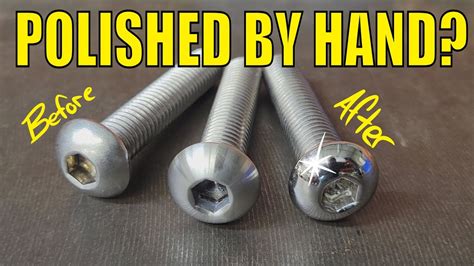How to Polish Stainless Steel: A Sparkling Guide to Cleaning and Maintaining Your Stainless Steel Appliances and Utensils
Stainless steel is a popular material for everything from kitchen appliances to jewelry, prized for its durability and sleek appearance. But even stainless steel can lose its luster over time. Scratches, fingerprints, and water spots can dull its shine. This comprehensive guide will walk you through various methods to polish stainless steel, restoring its brilliant shine and protecting its longevity.
Understanding Your Stainless Steel
Before we dive into polishing techniques, it's crucial to understand the type of stainless steel you're working with. Different grades of stainless steel may react differently to cleaning agents. While most methods are generally safe, always test a small, inconspicuous area first to ensure there's no adverse reaction.
Essential Tools and Materials
Before you begin, gather these essential items:
- Microfiber cloths: These are gentle yet effective at removing smudges and fingerprints. Avoid abrasive cloths, which can scratch the surface.
- Mild dish soap: Opt for a non-abrasive soap.
- Warm water: This is crucial for rinsing and cleaning.
- White vinegar: A natural cleaner that can help remove stubborn stains.
- Baking soda: A gentle abrasive for removing tougher stains and scratches. (Use sparingly!)
- Stainless steel polish (optional): Commercial polishes can provide a deep shine, but use them sparingly as overuse can damage the protective layer.
- Soft-bristled brush (optional): Helpful for cleaning crevices and hard-to-reach areas.
Step-by-Step Polishing Guide
Here's a step-by-step guide to polishing your stainless steel, starting with the simplest methods:
1. The Basic Clean: Removing Everyday Grime
This method is perfect for daily maintenance.
- Dampen a microfiber cloth with warm water and add a small amount of mild dish soap.
- Gently wipe the stainless steel surface in the direction of the grain. The grain is the direction of the brushed finish; look closely to determine the direction. Wiping against the grain can create streaks.
- Rinse thoroughly with clean warm water.
- Dry immediately with a clean, dry microfiber cloth. This prevents water spots from forming.
2. Tackling Stubborn Stains: Vinegar and Baking Soda
For tougher stains and water spots:
- Prepare a paste: Mix equal parts baking soda and water to form a paste.
- Apply the paste to the stained area: Use a soft cloth or sponge.
- Gently rub the paste in the direction of the grain.
- Rinse thoroughly with clean warm water.
- Wipe dry with a clean microfiber cloth. Important Note: Avoid using this method excessively, as excessive scrubbing with baking soda can scratch the surface.
3. Using White Vinegar for a Deeper Clean
White vinegar can work wonders on stubborn grime and mineral deposits.
- Mix equal parts white vinegar and water in a spray bottle.
- Spray the solution onto the stainless steel surface.
- Wipe clean with a microfiber cloth in the direction of the grain.
- Rinse and dry thoroughly.
4. Employing Stainless Steel Polish (Use Sparingly!)
Commercial polishes offer a high shine but overuse can strip protective layers. Follow the product instructions carefully.
- Apply a small amount of polish to a clean microfiber cloth.
- Rub gently in the direction of the grain.
- Buff to a high shine with a clean, dry cloth.
Maintaining Your Polished Stainless Steel
To maintain that brilliant shine, follow these tips:
- Clean regularly: Wipe down your stainless steel surfaces daily to prevent the buildup of grime and fingerprints.
- Avoid harsh chemicals: Harsh cleaners and abrasive pads can damage the surface.
- Use soft cloths: Always use soft microfiber cloths to avoid scratching.
- Dry thoroughly: Immediately dry any spills or water to prevent water spots.
By following these steps and tips, you can keep your stainless steel looking its best for years to come. Remember, gentle cleaning and consistent maintenance are key to preserving the beauty and shine of your stainless steel appliances and utensils.
